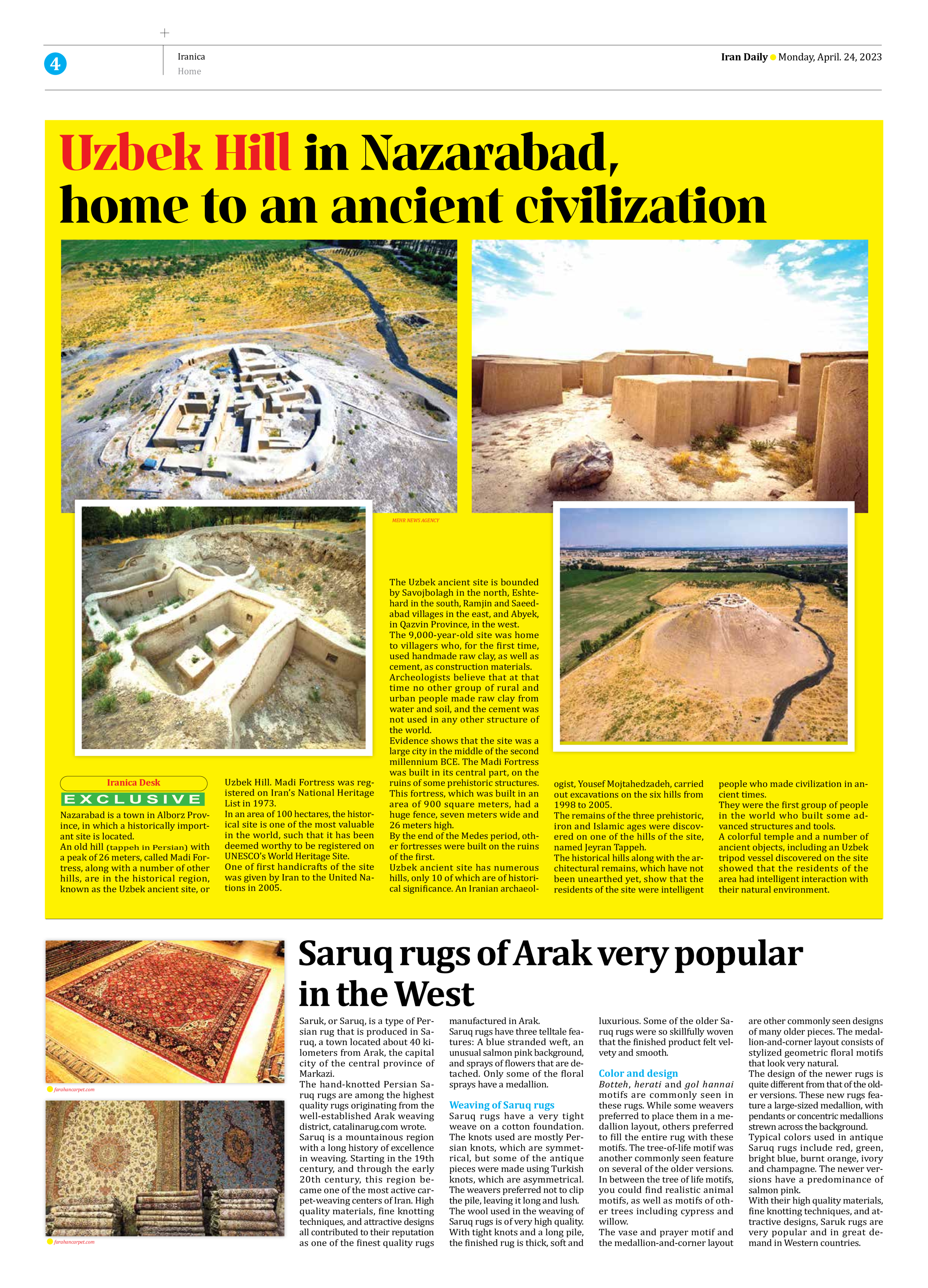
Uzbek Hill in Nazarabad, home to an ancient civilization
Nazarabad is a town in Alborz Province, in which a historically important site is located.
An old hill (tappeh in Persian) with a peak of 26 meters, called Madi Fortress, along with a number of other hills, are in the historical region, known as the Uzbek ancient site, or Uzbek Hill. Madi Fortress was registered on Iran’s National Heritage List in 1973.
In an area of 100 hectares, the historical site is one of the most valuable in the world, such that it has been deemed worthy to be registered on UNESCO’s World Heritage Site.
One of first handicrafts of the site was given by Iran to the United Nations in 2005.
The Uzbek ancient site is bounded by Savojbolagh in the north, Eshtehard in the south, Ramjin and Saeedabad villages in the east, and Abyek, in Qazvin Province, in the west.
The 9,000-year-old site was home to villagers who, for the first time, used handmade raw clay, as well as cement, as construction materials.
Archeologists believe that at that time no other group of rural and urban people made raw clay from water and soil, and the cement was not used in any other structure of the world.
Evidence shows that the site was a large city in the middle of the second millennium BCE. The Madi Fortress was built in its central part, on the ruins of some prehistoric structures.
This fortress, which was built in an area of 900 square meters, had a huge fence, seven meters wide and 26 meters high.
By the end of the Medes period, other fortresses were built on the ruins of the first.
Uzbek ancient site has numerous hills, only 10 of which are of historical significance. An Iranian archaeologist, Yousef Mojtahedzadeh, carried out excavations on the six hills from 1998 to 2005.
The remains of the three prehistoric, iron and Islamic ages were discovered on one of the hills of the site, named Jeyran Tappeh.
The historical hills along with the architectural remains, which have not been unearthed yet, show that the residents of the site were intelligent people who made civilization in ancient times.
They were the first group of people in the world who built some advanced structures and tools.
A colorful temple and a number of ancient objects, including an Uzbek tripod vessel discovered on the site showed that the residents of the area had intelligent interaction with their natural environment.







